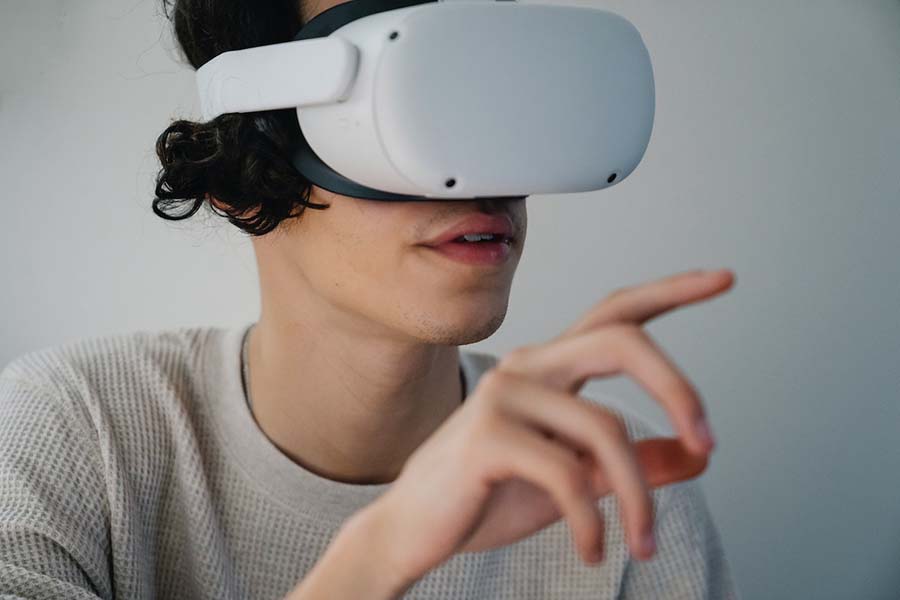The Future of Wearable Technology: What’s Next?

Wearable technology has come a long way from its humble beginnings, transforming our daily lives and revolutionising how we interact with the digital world. From fitness trackers to smartwatches, these devices have seamlessly integrated into our routines, offering convenience, accessibility, and valuable insights into our health and well-being. As we look ahead, the future of wearable technology holds exciting possibilities and promises to take our experiences to new heights.
Enhanced Connectivity and Integration
The future of wearable technology lies in its ability to connect and integrate with other devices and systems seamlessly. We expect wearables to become even more interconnected, allowing us to effortlessly sync data with our smartphones, tablets, and computers. This enhanced connectivity will enable wearables to deliver a more holistic and personalised experience, integrating with smart home systems, healthcare providers, and even our vehicles.
Wearables can synchronise with various devices, such as smart TVs, smart thermostats, and smart appliances, allowing seamless technology integration into our daily lives.
Users can control and monitor their smart home systems through their wearable devices, making it more convenient and efficient.
Integration with healthcare providers will enable wearables to transmit real-time health data directly to doctors, allowing for remote monitoring and timely interventions.
Advanced Health Monitoring
One of the most significant impacts of wearable technology has been in the field of health and fitness. These devices have empowered individuals to monitor their physical activities, sleep patterns, heart rate, and more. Wearable technology will continue to advance in its health monitoring capabilities. We can expect wearables to become even more accurate in tracking vital signs, detecting and predicting medical conditions, and even offering real-time diagnostics.
Wearables will incorporate advanced sensors and algorithms to provide more precise and detailed health measurements, such as blood pressure, blood glucose levels, and oxygen saturation.
These devices will be able to analyse the collected data and provide personalised health recommendations, such as exercise routines, diet plans, and sleep schedules.
Wearables will also detect abnormal health patterns and alert users about potential health risks, allowing for early intervention and prevention.
Augmented and Virtual Reality
Augmented Reality (AR) and Virtual Reality (VR) have seen significant advancements in recent years, and wearable technology is set to play a crucial role in their widespread adoption. As headsets become more compact and lightweight, we can expect wearable devices to become the primary interface for AR and VR experiences. Wearables will immerse us in virtual worlds, from gaming and entertainment to education and training, blurring the lines between reality and digital simulations.
Wearable AR devices will provide users with interactive and immersive experiences in various fields, such as gaming, tourism, and design.
VR headsets integrated into wearables will offer a fully immersive experience, allowing users to explore virtual environments and participate in virtual events.
Educational institutions and training programs will utilise wearables to provide hands-on learning experiences, enabling students to interact with virtual objects and scenarios.
Smart Fabrics and Fashion-Tech
The future of wearable technology is not limited to devices worn on our wrists or heads. Innovative fabrics and fashion tech will revolutionise how we interact with clothing and accessories. Imagine garments that can change colour and temperature or even display digital information. From smartwatches integrated into our clothing to wearable sensors monitoring our body’s vital signs, fashion and technology will merge to create a new era of intelligent wearables.
Intelligent fabrics will incorporate sensors and actuators that can respond to environmental conditions, adjusting temperature and humidity levels for optimal comfort.
Wearable devices integrated into clothing will provide seamless access to technology, eliminating the need for separate devices.
Fashion tech will enable users to customise their clothing’s appearance and functionality, allowing for a personalised style and enhanced user experience.
Energy Efficiency and Longer Battery Life
Battery life has been a prevalent concern for wearable technology users. However, advancements in battery technology will address this issue soon. We expect wearables to become energy-efficient, enabling extended usage without frequent recharging. Innovative energy sources, such as solar power or kinetic energy harvesting, could further enhance the battery life of wearables, eliminating the need for constant battery replacements.
Wearables will utilise energy-efficient components, optimising power consumption and extending battery life.
Integrating solar panels into wearable devices will enable them to harness solar energy and recharge while worn.
Kinetic energy harvesting technologies will allow wearables to generate power from the user’s movements, reducing the reliance on traditional battery charging methods.
Artificial Intelligence and Machine Learning
Artificial Intelligence (AI) and Machine Learning (ML) will play a key role in shaping the future of wearable technology. These technologies enable wearables to understand user behaviour, preferences, and habits, providing personalised recommendations and insights. With AI-powered virtual assistants integrated into wearables, we can expect more contextual and intuitive interactions, creating a seamless and intelligent user experience.
Wearables will analyse user data and learn from patterns to provide personalised health, fitness, and productivity recommendations.
AI-powered virtual assistants will understand user commands and preferences, offering proactive suggestions and reminders based on the user’s context.
Machine learning algorithms will continuously improve wearable devices’ performance, adapting to individual users’ needs and preferences.
Increased Security and Privacy Measures
As wearable technology becomes more ingrained, ensuring security and privacy will be critical. The future of wearables will see advancements in biometric authentication methods, such as fingerprint or facial recognition, to protect sensitive data stored on these devices. Additionally, manufacturers and developers will focus on implementing robust encryption and security measures to safeguard user information and prevent unauthorised access.
Wearables will incorporate advanced biometric authentication methods, ensuring only authorised users can access the device and its data.
Data encryption techniques will be employed to protect sensitive information transmitted between wearables and other devices.
Wearables will have built-in security features, such as remote device locking and data wiping, in case of loss or theft.
Assistive Technologies
Wearable technology can potentially transform the lives of individuals with disabilities or specific needs. In the future, we can expect wearables to serve as assistive devices, providing enhanced communication, navigation, and accessibility features. From smart glasses that aid the visually impaired to wearable sensors that monitor and assist individuals with mobility limitations, these technologies will empower and enable a more inclusive society.
Wearable devices will incorporate speech recognition and text-to-speech capabilities to assist individuals with communication disabilities.
G wearable devices equipped with GPS and mapping functionalities will provide navigation assistance, guiding visually impaired individuals in unfamiliar environments.
Wearable sensors will monitor vital signs and provide real-time feedback and alerts for individuals with specific medical conditions, such as epilepsy or diabetes.
Conclusion
The future of wearable technology is poised to be a thrilling journey, with innovations that will redefine how we interact with the digital world and enhance our daily lives. The possibilities seem limitless, from enhanced connectivity and health monitoring to augmented and virtual reality experiences. As technology evolves, wearables will become integral to our existence, seamlessly integrating into our routines and helping us lead healthier, more connected, and empowered lives.
Check out our other related posts if you enjoyed this one.
- The Rise of Collaborative Robots: Transforming Industries
- Unmasking Cyber Secrets: The Art of Deception Revealed!
- Decoding Cyber Threats: The Social Engineering Menace
- Unlock the Ultimate Quest: Ready Player One’s Audio Adventure!
- Revolutionising Wellness: Metaverse Therapy Unleashes Mental Liberation!
- Code Mastery Unleashed: Transform Your Skills with Clean Code by Robert C. Martin! 🚀
- Top Must-Have Tech Gadgets for Kids – Unbelievable Fun!
- Mastering Crypto Trading: Proven Strategies
- Unveiling Ethereum 2.0: Advancements & Impact
- AI Transforms E-Commerce: A Digital Revolution
Sign up for updates on this blog and our latest blog post if you enjoyed reading this one.
Share our blog content with your friends and colleagues via Facebook, Twitter, Pinterest, LinkedIn, email or WhatsApp links below and help them stay informed about the latest insights on business, marketing, finance, lifestyle, and society. Let’s build a knowledge-sharing community and empower each other to achieve our goals.
FAQ
What can we expect from the future of wearable technology?
The future of wearable technology holds possibilities such as enhanced connectivity and integration, advanced health monitoring, augmented and virtual reality experiences, innovative fabrics and fashion tech.
How will wearables be integrated with other devices and systems?
Wearables can synchronise with various devices, control and monitor smart home systems, and transmit real-time health data to healthcare providers.
How will wearables advance in health monitoring capabilities?
Wearables will incorporate advanced sensors and algorithms to provide more precise health measurements, analyse data to provide personalised health recommendations and detect abnormal health patterns.
What advancements can we expect in wearable technology’s energy efficiency?
Wearables will utilise energy-efficient components, integrate solar panels for recharging, and use kinetic energy harvesting technologies for longer battery life.
Credits
Featured photo by Eren Li on Pexels.









